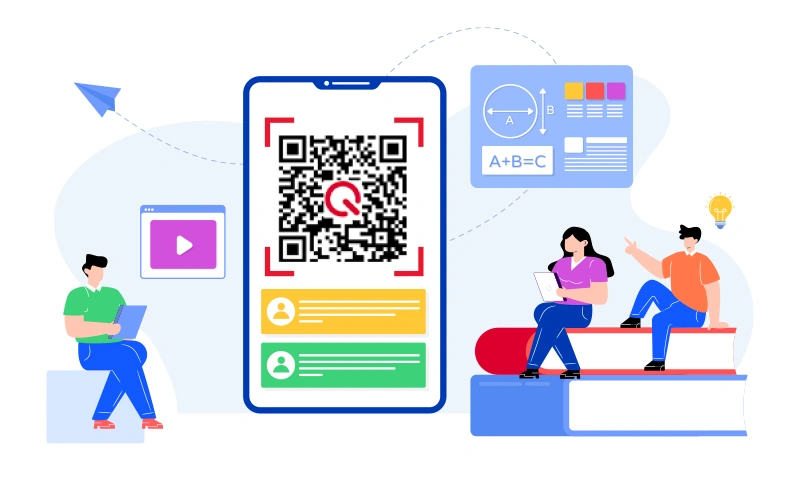
QR Codes in Education: Engaging Gamification and Learning
QR codes have transformed classrooms into dynamic and interactive learning environments. By blending gamification with technology, educators can elevate traditional teaching methods, making learning more engaging and effective.
Why Use QR Codes in Education?
- Quick Access to Resources:
- QR codes allow instant access to videos, quizzes, and supplementary materials.
- Students can explore deeper into topics without flipping through lengthy textbooks.
- Interactive Learning:
- QR codes create gamified activities like scavenger hunts and quizzes, keeping students excited.
- They provide hands-on engagement, transforming lessons into adventures.
- Streamlined Communication:
- QR codes simplify sharing of curriculum, notices, and event details with students and parents.
- Teachers can track attendance effortlessly and manage classroom information efficiently.
How QR Codes are Used in Education
- Access to Study Material: Link codes to online resources for additional reading, videos, and interactive content.
- Enhanced Schoolbooks: Integrate QR codes in textbooks to provide real-time updates or external resources.
- Gamified Learning: Use QR codes for treasure hunts, puzzles, and other game-based activities to foster enthusiasm.
- Attendance Tracking: Replace roll calls with QR codes to save time and ensure accuracy.
- Sharing Information: From biological specimens to school events, QR codes streamline data sharing.
Real-Life Examples
- University of Texas, Arlington:
- Uses QR codes to distribute course materials and track attendance.
- Enhances student engagement with gamified experiences.
- University of Manchester, UK:
- Embeds QR codes in curriculum materials to link students to additional resources.
- Uses gamification to create interactive classroom activities.
- Schools in Kerala, India:
- Employ QR codes for managing attendance and sharing information with parents.
- Enhance learning with gamified tools and online resources.
Best Practices for Implementing QR Codes
- Introduce QR Codes Clearly: Explain their purpose and usage to students and parents.
- Address Privacy and Security: Ensure that data shared via QR codes is safe and adheres to privacy standards.
- Optimize Design: Use appropriate colors, logos, and sizes for visibility and scannability.
- Combine Fun with Education: Balance engaging gamification elements with academic rigor.
Leveraging QR Codes for Immersive Learning
- Scavenger Hunts: Create interactive hunts where each QR code reveals a clue or activity.
- Virtual Field Trips: Transport students to museums or historical sites through augmented QR experiences.
- Interactive Book Reviews: Link QR codes to student-made videos or presentations about books.
- Digital Business Cards for Teachers: Share resources, office hours, and contact details efficiently.
Conclusion
Incorporating QR codes into education fosters a stimulating learning environment, making lessons more interactive and memorable. By balancing innovation with practicality, educators can harness the full potential of QR codes to engage students and enrich their educational journeys.